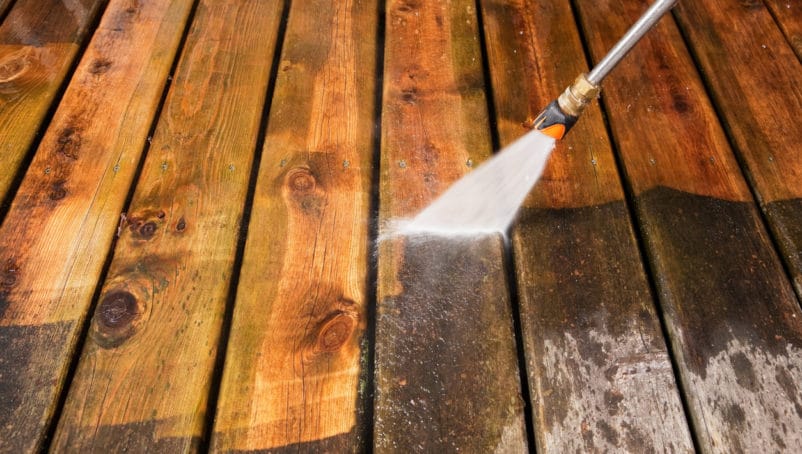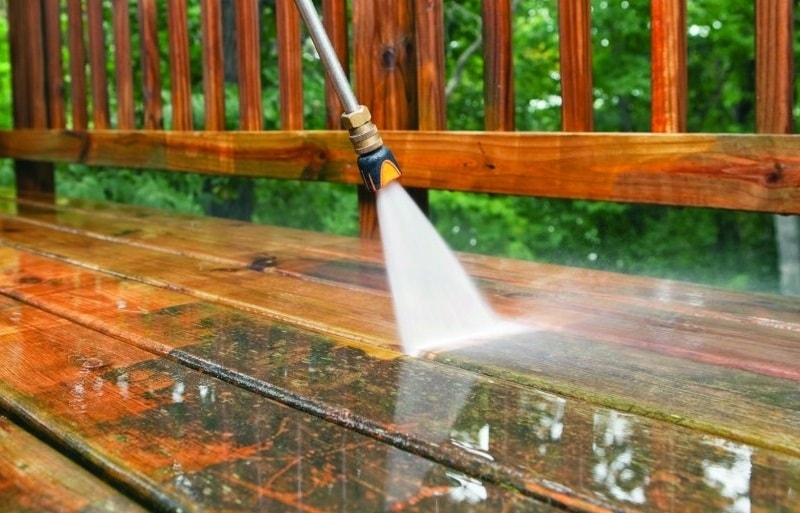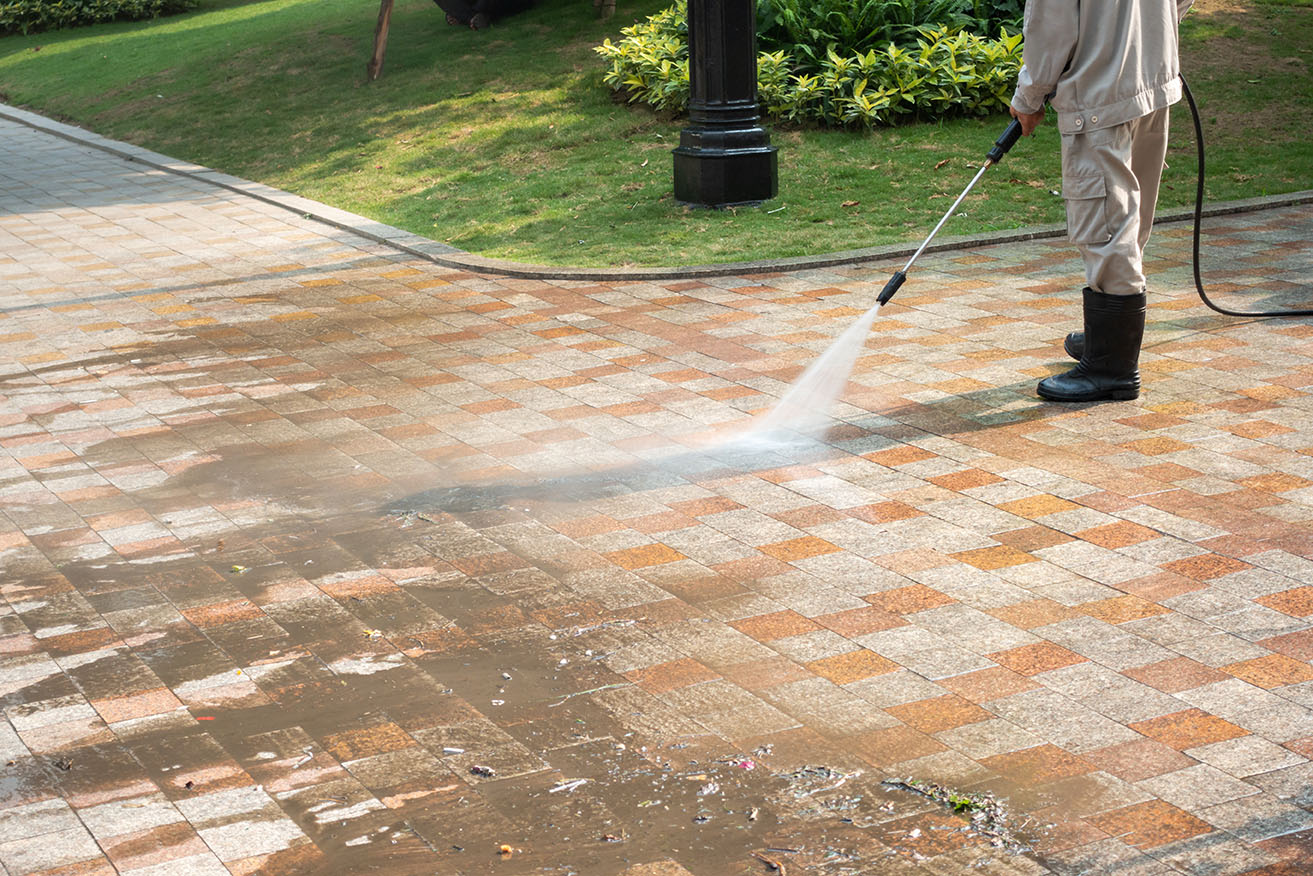Pressure washing is a cleaning method that uses high-pressure water spray. It removes dirt, grime, and mold from surfaces and objects.
Pressure washing is an effective and efficient technique widely used to maintain the appearance and hygiene of various outdoor areas and items. Typically involving a pressure washer machine, this method blasts water at surfaces at a high velocity to tackle stubborn stains, accumulated dirt, and unwanted substances like algae or moss.
Residential homeowners, commercial establishments, and public facilities employ pressure washing for enhancing curb appeal and upkeeping buildings, sidewalks, driveways, decks, and patios. Its popularity stems from the ability to provide a deep clean without the need for abrasive chemicals, making it a sought-after choice for environmentally conscious cleaning. The process not only improves aesthetic appeal but also helps in preserving the material integrity of surfaces, preventing decay and prolonging their lifespan.
Introduction To Pressure Washing
Think of pressure washing like a super-powered hose. Dirt and grime don’t stand a chance! It uses high pressure to clean things. Homes and buildings, sidewalks, and decks can all shine like new. It’s fast, efficient, and super satisfying to watch.
The Basics Of High-pressure Cleaning
Pressure washing goes beyond a typical garden hose. It blasts water at a high pressure. This cleans surfaces in a way regular water can’t. It can reach into tiny grooves and remove all dirt. Let’s break down how it works:
- Water Source: Connects to a regular tap.
- Pressure Washer: The machine that does the magic.
- Powerful Spray: Nozzles shoot water fast and hard.
Common Uses In Residential And Commercial Settings
Pressure washing works wonders in many places. From homes to big buildings, it gets the job done.
| Residential | Commercial |
|---|---|
| Patios | Storefronts |
| Driveways | Parking lots |
| House exteriors | Sidewalks |

Credit: www.nextinsurance.com
Equipment And Technology Behind Pressure Washing
Pressure washing transforms dirty surfaces with the awesome power of high-pressure water jets. The right equipment and advanced technology play vital roles in effectiveness. Let’s delve into what makes pressure washing an essential cleaning tool.
Key Components Of A Pressure Washer
At the heart of any pressure washer lies integrated components that bolster its cleaning capability.
- Motor or Engine: This powers the device, generating pressure for the water.
- Pump: This component converts motor/engine power into water pressure.
- Nozzle: Nozzles control the water flow shape, affecting cleaning impact.
- Hose: A high-pressure hose delivers water from the pump to the nozzle.
- Water supply: The source feeding water into the machine.
Advancements In Pressure Washing Technology
Recent technological leaps have optimized pressure washing for better efficiency and safety.
| Advancement | Impact |
|---|---|
| Adjustable Pressure Settings | Match pressure levels to different cleaning tasks |
| Eco-friendly Cleaners | Enhance cleaning power without harming the environment |
| Heated Water Capability | Boosts effectiveness against grease and oil |
| Automatic Shut-off | Improves safety and conserves energy |
Smart pressure washers now come with digital controls, making operation straightforward. Durable materials extend the machine’s lifespan while innovations in pump design offer greater pressure with less water usage.
Benefits Of Pressure Washing
Pressure washing can rejuvenate your home or business exterior. This powerful cleaning technique blasts away dirt, mold, and stains. It’s not just about making things look clean. Pressure washing offers several advantages.
Improving Surface Longevity
Dirty surfaces decay faster. Pressure washing prevents this decay. By removing harmful substances, it keeps surfaces in good condition. It extends the life of your decks, driveways, and siding. This preservation saves money on costly repairs.
Enhancing Aesthetic Appeal
Curb appeal matters whether you’re selling your home or not. Pressure washing removes unsightly grime. It restores the original beauty of your property. You feel proud when your home or office shines.
List of visual improvements:
- Brighter driveways
- Cleaner siding
- Spotless patios
Health And Safety Considerations
Pressure washing is also about health. Allergens and mold pose risks. They can make outdoor spaces dangerous. Pressure washing removes these hazards. It creates a safer home or workspace. Enjoy the outdoors without worry.
| Area Cleaned | Health Benefit |
|---|---|
| Patios | Reduces allergy triggers |
| Walkways | Prevents slip hazards |
| Walls | Eliminates mold growth |
Pressure Washing Techniques
Exploring the realm of Pressure Washing Techniques unveils the dynamic methods and strategies for effectively cleaning various surfaces. This section dives into the intricacies of using high-pressure water sprays to remove unwanted materials.
Best Practices For Different Surfaces
Different materials require unique approaches to ensure safety and efficiency during pressure washing:
- Concrete: Use a steady sweeping motion with a 15-degree nozzle.
- Wood: Opt for a wide spray pattern and hold the nozzle further away to prevent damage.
- Brick: Apply detergent first and use a softer water stream to protect mortar.
Always test a small, inconspicuous area before starting.
Eco-friendly Pressure Washing Tips
To pressure wash while protecting the environment, follow these simple guidelines:
- Choose biodegradable detergents to minimize chemical runoff.
- Attach a water recovery system to capture and recycle water.
- Wash on days with minimal wind to reduce water spread and evaporation.
Consider the local ecosystem and opt for methods that conserve water and prevent pollution.
Challenges And Precautions
Pressure washing can work wonders in ridding surfaces of stubborn grime and dirt. Yet, it brings its own set of challenges and precautions. Careful handling and knowledge of the equipment are paramount to avoid property damage or personal injury. In this section, we delve into these aspects to ensure a safe and effective pressure washing experience.
Managing Potential Damage To Surfaces
Protecting your surfaces is crucial when pressure washing.
Selecting the correct pressure setting is the first step to prevent damage.
- Lower pressures work best for delicate surfaces
- Test a small area before full application
- Avoid spraying windows, vents, or outdoor units directly
Keep the nozzle moving to prevent concentrated water from harming one spot.
Safety Measures While Operating Pressure Washers
Safety first—personal protective equipment (PPE) is non-negotiable.
Always wear:
- Waterproof boots
- Gloves
- Eye protection
Be mindful of electrical hazards. Keep cords and outlets dry.
| Do | Don’t |
|---|---|
| Use a ground fault circuit interrupter (GFCI) | Operate in wet weather |
| Check for frayed cords | Point at people or animals |
Ensure a firm footing. Wet surfaces can be slippery.
Read the manual for your specific pressure washer model.
Know the emergency shut-off procedure. Understand the equipment before starting your job.

Credit: majesticwindowsexteriorcleaning.com
Selecting A Pressure Washing Service
Imagine your home looking as good as new. Dirt and grime aren’t your friends. Pressure washing blasts them away. It’s time to choose a service that best fits your needs. Selecting a pressure washing service isn’t tough. Keep in mind quality, reliability, and value.
Criteria For Choosing A Professional Provider
- Experience: Look for a provider with years of service.
- Reputation: Read reviews and ask for references.
- Insurance: Ensure they’re covered to protect your property.
- Equipment: Check if they use high-quality machinery.
- Price: Compare quotes, but don’t compromise quality for cost.
Diy Vs. Professional Pressure Washing
| DIY Pressure Washing | Professional Pressure Washing |
|---|---|
| Cost-effective for small jobs | Consistent quality for all job sizes |
| Time-consuming | Time-saving |
| Risks of property damage | Less risk with expert handling |
| Limited by equipment availability | Access to the latest equipment |
Deciding between DIY and professional pressure washing depends on the job’s complexity. DIY can be cost-saving for simple tasks. For tougher and larger areas, hiring a professional ensures safety and peak performance.

Credit: washh.com
Frequently Asked Questions On What Is Pressure Washing?
What Is Pressure Washing Used For?
Pressure washing, also known as power washing, is a cleaning method that uses high-pressure water spray to remove dirt, mold, grime, and other debris from surfaces like buildings, vehicles, and concrete surfaces. It is an effective way to maintain and restore the appearance of different outdoor areas.
Can Pressure Washing Damage Surfaces?
Yes, pressure washing can damage surfaces if not done correctly. High-pressure water can erode soft materials, strip paint, and even cause harm to wood or siding. It’s important to select the correct pressure setting and to test on a small area before proceeding.
How Often Should You Pressure Wash Your Home?
It is typically recommended to pressure wash your home every one to two years. However, the frequency can vary based on the local climate, the type of siding on your home, and the level of exposure to dirt and algae.
Is Pressure Washing Environmentally Friendly?
Pressure washing can be environmentally friendly if done responsibly. Using biodegradable detergents and avoiding excessive water waste are key practices. It is crucial to prevent harmful chemicals from entering storm drains and to comply with local water conservation regulations.
Conclusion
Pressure washing stands as a powerful cleaning method for various surfaces. It removes grime effectively, revitalizing your property’s appearance with ease. Whether for home maintenance or commercial cleanliness, this technique offers a swift and efficient solution. Embrace the transformative power of pressure washing and witness your space bloom anew.
